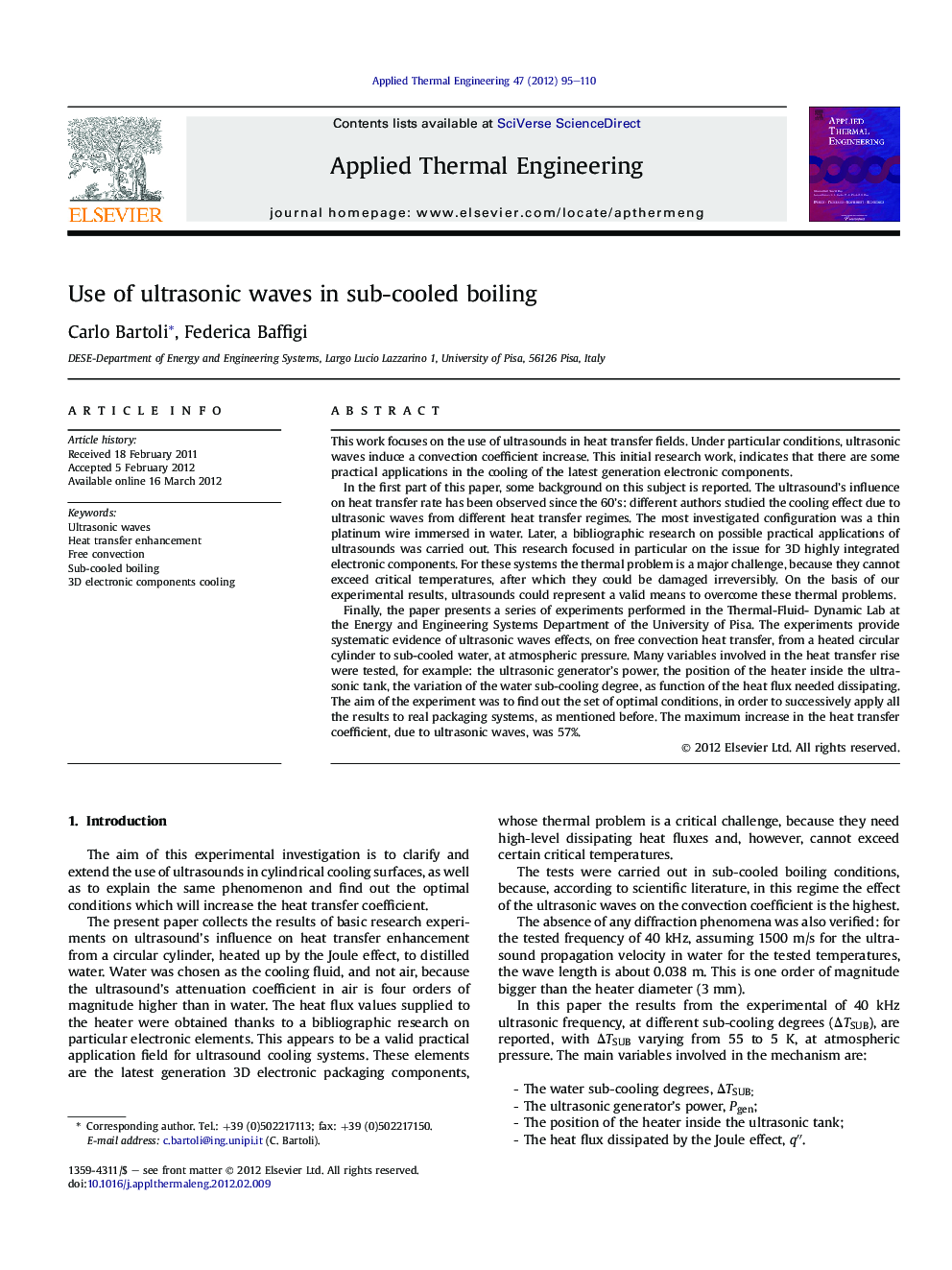| Article ID | Journal | Published Year | Pages | File Type |
|---|---|---|---|---|
| 647023 | Applied Thermal Engineering | 2012 | 16 Pages |
This work focuses on the use of ultrasounds in heat transfer fields. Under particular conditions, ultrasonic waves induce a convection coefficient increase. This initial research work, indicates that there are some practical applications in the cooling of the latest generation electronic components.In the first part of this paper, some background on this subject is reported. The ultrasound's influence on heat transfer rate has been observed since the 60's: different authors studied the cooling effect due to ultrasonic waves from different heat transfer regimes. The most investigated configuration was a thin platinum wire immersed in water. Later, a bibliographic research on possible practical applications of ultrasounds was carried out. This research focused in particular on the issue for 3D highly integrated electronic components. For these systems the thermal problem is a major challenge, because they cannot exceed critical temperatures, after which they could be damaged irreversibly. On the basis of our experimental results, ultrasounds could represent a valid means to overcome these thermal problems.Finally, the paper presents a series of experiments performed in the Thermal-Fluid- Dynamic Lab at the Energy and Engineering Systems Department of the University of Pisa. The experiments provide systematic evidence of ultrasonic waves effects, on free convection heat transfer, from a heated circular cylinder to sub-cooled water, at atmospheric pressure. Many variables involved in the heat transfer rise were tested, for example: the ultrasonic generator's power, the position of the heater inside the ultrasonic tank, the variation of the water sub-cooling degree, as function of the heat flux needed dissipating. The aim of the experiment was to find out the set of optimal conditions, in order to successively apply all the results to real packaging systems, as mentioned before. The maximum increase in the heat transfer coefficient, due to ultrasonic waves, was 57%.
► We investigated experimentally the heat transfer from a circular cylinder to distilled water in presence of ultrasounds. ► The cylinder was heated up to reach particular temperatures, which are critical for last generation electronic components. ► All tests are carried on in sub-cooled boiling conditions, at atmospheric pressure. ► The tests reported an increase in the heat transfer up to 57%, in the optimal conditions. ► The sub-cooling degree is the only parameter that has the most significant influence on the heat transfer enhancement.
